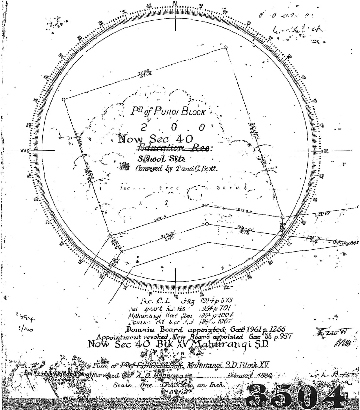From seventeen hundred to fifty words
The finishing touch to Colin Hawken’s fine new fence in front of the Mahurangi West Hall came in the form of a handsome new sign.

Utilitarian Gift: Two two-acre lots were gifted by the Scott brothers from their 100-acre block. Besides land for the school, land was also gifted for that section of the Mahurangi Heads West Road. When surveyed, in 1884, it was mostly in ‘Tea tree scrub’. Mahurangi West Hall, Mahurangi Heads West School 1886–1946: A Conservation Plan Dave Pearson Architects
Mahurangi West local Murray Davey, of Signpost, donating this and many others since the hall restoration began, provided the sign, and kindly provides its ongoing content.
Murray has built the sign with an inset panel to display details of upcoming hall events. This feature helped to ensure that Helen Molder’s one-woman play A Vote for Cynthia performed on Friday night was a sell-out success, kicking an extra $600 into kitty.
When there is no event being advertised, hall project manager Stuart Charlton’s clever concept is for the sign insert to display a short history of the hall.
‘Fifty words!’, was the brief given to the editor of the Mahurangi Magazine.
The editor gets the honour of penning the succinct history, somewhat as a penance for having made a meal of his contribution to blowing out the conservation plan Mahurangi West Hall, Mahurangi Heads West School 1886–1946 to 17 218 words.
The conservation plan, prepared by heritage architect Dave Pearson, was the first time a comprehensive history of the building had been attempted. The otherwise masterly Jade River: a History of the Mahurangi is scant on its story, ironical considering author Dr RH Locker’s strong family links with the school.
This presented a unique opportunity to tease out answers to a number of lingering questions. The most perplexing perhaps was why the school was built so far from the water, when it wasn’t until well into the 1900s that the Mahurangi West Road could be negotiated year-round—school trips to visit the Warkworth school were by launch up the Mahurangi River.
Lets see if fifty words can cover it!
Farmer and shipbuilder George Stuart Scott of Ōpaheke donated this two-acre site but missed out on building the Mahurangi Heads West School—his runner-up tender was £5 more than the £185 paid. Five of George’s children attended when it opened in 1886. Shipbuilder and chairman of the Mahurangi East School, John Darrach, convinced the Board of Education of the danger to the dozen children who were rowing across the harbour for their lessons. The site was selected so as to be accessible to the Māori community at Te Muri, but by the time it opened, Te Muri had been abandoned.
Bugger! One hundred words; let’s try that again:
Mahurangi Heads West School until 1946. George Stuart Scott donated the two-acre site; five of his children attended when it opened in 1886. The site was selected so as to be accessible to the Māori children of Te Muri, but by the time it opened Te Muri had been abandoned.
And this doesn’t start to cover the role of the school, including as a place of socialising and worship.
Perhaps the fifty-word limit needs negotiating with the project manager!
Perhaps it is high time Mahurangi West Hall, Mahurangi Heads West School 1886–1946: A Conservation Plan was simply published in the Mahurangi Magazine.
